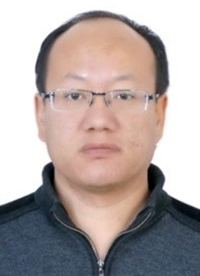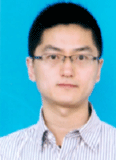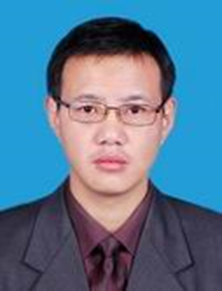

Keynote Speakers

Prof. Junwen Zhang
China University of Mining and Technology (BEIJING)
Introduction
Dr. Junwen Zhang is a professor in mining engineering, specializing in road supporting and mining rock mechanics field at China University of Mining and Technology (BEIJING), China. Zhang Bored in 1977, Inner Mongolia, China. Zhang received his BA, MA at the Taiyuan University of Technology in 2001 and 2004, and PhD at China University of Mining and Technology (Beijing) (CUMTB) in 2013. Zhang is concurrently a member of the 8th Council of the Youth Committee of the Chinese Society of Rock Mechanics and Engineering, and a member of the Coal Mine System Engineering Committee of China Coal Society. He has been engaged in research on deep coal mining, mine pressure and ground control, rock mechanics. Zhang hosted the key program, general program funded by the National Natural Science Foundation (NSFC), the sub-project of the National Key Research and Development Project, and more than ten projects funded by companies. Zhang acquired a first prize of the Science and Technology Development of the Ministry of Education (No. 1), 2 second prizes of the Science and Technology Development of the Ministry of Education (No. 2 and 3), 6 second prizes of the Science and Technology Development of the China National Coal Association (No. 1, 1, 2, 3, 3, 4), and a second prize of the Science and Technology Development of the Chinese Society for Rock Mechanics and Engineering (No. 2). In the journals such as the IJMST, Zhang published 41 papers indexed by SCI/EI (as the first author/corresponding author, 34 papers were published.). 2 monographs were published. Zhang served as the young and middle-aged editorial board member in the international journal of IJMST (Top journal). Zhang acquired the honorary title of the Science Award for Youths in Coal Mining and was selected as award plan of the Yueqi Distinguished Academics.
Research Area
Road Support
Rock Mechanics in Mines
Speech Title:Understanding of Rock Burst Disaster Monitoring and Prevention.
Abstract:The highly frequent occurrence of rock burst disasters in coal mines still seriously restricts the safety and efficient mining of coal resources in deep. The occurrence mechanism, monitoring, early warning and prevention of rockburst are a whole. This report will focus on the research status, occurrence mechanism, monitoring, early warning and prevention methods of rockburst at home and abroad, so as to deepen the understanding of coal mine rockburst disaster prevention and control.

Prof. Hongfu Zhou
Chengdu Center, China Geological Survey
Shandong University of Science and Technology, China
Research Area
Engineering Geology
Geological Hazards
Speech Title:Research on geological hazards effect along the Anninghe fault zone at the eastern edge of the Tibetan Plateau
Abstract:Tibetan Plateau is known as the roof of theworld. Due to the continuous uplift of the Tibetan Plateau, many active fault zones are present. Theseactive fault zones such as the Anninghe fault zone have a significant influence on the formation of special geomorphology and the distribution of geological hazards at the eastern edge of the Tibetan Plateau. The Anninghe fault zone is a key part of the Y-shaped fault pattern in the Sichuan-Yunnan block of China. In this paper, high-resolution topographic data, multitemporal remote sensing images, numerical calculations, seismic records, and comprehensive field investigations were employed to study the landslide distribution along the active part of the Anninghe. The influence of active faults on the lithology, rock mass structures and slope stress fields were also studied. The results show that the faults within the Anninghe fault zone have damaged the structure and integrity of the slope rock mass, reduced the mechanical strength of the rock mass and controlled the slope failure modes. The faults have also controlled the stress field, the distribution of the plastic strain zone and the maximum shear strain zone of the slope, thus have promoted the formation and evolution of landslides. We find that the studied landslides are linearly distributed along the Anninghe fault zone, and more than 80% of these landslides are within 2-3 km of the fault rupture zone. Moreover, the Anninghe fault zone provides abundant substance for landslides or debris flows. This paper presents four types of sliding mode control of the Anninghe fault zone, e.g., constituting the whole landslide body, controlling the lateral boundary of the landslide, controlling the crown of the landslide, and constituting the toe of the landslide. The results presented merit close attention as a valuable reference source for local infrastructure planning and engineering projects.

Assoc. Prof. Bingxiang Yuan
Guangdong University of Technology
Introduction
Dr. Bingxiang Yuan graduated with a Ph.D. from Lanzhou University in 2012. As a Ph.D. candidate, he received a scholarship from the Study Abroad Committee of the Ministry of Education, and studied at the University of Toronto and Ryerson University for two years. Later, I did postdoctoral work at Harbin Institute of Technology (Shenzhen) from 2012 to 2015. So far, he has presided over more than ten scientific research projects, including 2 National Natural Science Foundation of China, 2 China Postdoctoral Funds, 2 National Key Laboratory Open Fund Projects, General Projects of Guangdong Natural Science Foundation, and Guangdong Provincial Department of Transportation. project. In addition, he has published more than 30 papers, 18 SCI papers, 12 EI papers, and authorized 2 national invention patents and 2 utility model patents. As an editor in Advances in Civil Engineering.
Research Area
Geotechnical engineering
Tunnel engineering
Solid waste reuse
Speech Title:Study of the soil displacement field around a laterally loaded pile based on the PIV technique
Abstract:With the development of digital image processing, an economical, accurate, and full-field image correlation technique, termed particle image velocimetry (PIV), has been used in geotechnical engineering. Yuan Bingxiang was the first to apply the PIV technique to the study of the two-dimensional displacement field of the soil around the pile. On the one hand, the variation pattern of the damage range and the influence range of the soil around the pile under different cross-sectional piles under load was successfully obtained. On the other hand, the newly developed Stereo-PIV technique was used to investigate the effect of passive piles on the deformation of the soil around the laterally loaded piles. Furthermore, the team combined the PIV technique with transparent soil to build a full 3D displacement measurement system. The internal soil displacement around the pile under lateral load was visual based on hydraulic gradient tests. The three-dimensional deformation characteristics of the soil in the zone of influence were obtained by reconstructing the two-dimensional displacement field. This study helps to better understand the interior soil behavior around a laterally loaded pile.

Assoc. Prof. Lingkun Chen
Yangzhou University, China
Introduction
Dr. Lingkun Chen is a visiting associate professor/postdoctoral fellow in the Department of Civil and Environmental Engineering at the University of California, Los Angeles (UCLA); a visiting sch/Beijing Jiaotong University; an associate professor in the School of Construction and Engineering at Yangzhou University; and a master's student advisor. Central South University's Civil Engineering School granteolar in the Department of Civil Structural and Environmental Engineering (MCEER Lab) at the State University of New York at Buffalo; a postdoctoral fellow at Southwest Jiaotong Universityd him a Ph.D. in bridge dynamics in 2012. He has studied both static and dynamic modeling of bridges and tunnels, as well as dynamic model effects on wind resistance. He has made important contributions to train-neigh tests in mathematical theory, modeling, and dynamic analysis/mechanical testing. A whole 50 papers have been publisshed by him in the Structure and Infrastructure Engineering, Engineering Structures, Vehicle System Dynamics and ASCE Journal of performance of constructed facilities. He has been credited with overseeing 10 nationally-recognized innovations and many NSFC and Provincial initiatives.
Research Area
Vehicle-bridge coupling vibration & bridge isolation and vibration control
indmill-bridge coupling vibration analysis & Multi-hazard probability density analysis
Biomedical image processing
Civil engineering information technology based on machine learning & deep learning
Speech Title:Study of the Soil Displacement Field Around a Laterally Loaded Pile Based on the Piv Technique.
Abstract:With the increase of the train speed and the proportion of high-speed railway Bridges in the line, the coupling dynamic action of earthquake and high-speed train will have a more significant impact on the dynamic response of the train-bridge system, the safety of the train operation on the bridge and the comfort of passengers, and its dynamic behavior will be more complex. Explore the coupling mechanism. It is of great significance to analyze the dynamic response of high-speed train-bridge system under earthquake action and formulate corresponding early warning measures.
On the basis of summarizing and absorbing the existing research achievements, this report mainly discusses the latest research achievements made by the author. Established the earthquake under the action of high speed railway train - without a frantic jumble orbit - bridge dynamic analysis method, compiled the corresponding software, and discusses the earthquake under the action of high speed railway train - without a frantic jumble orbit - bridge dynamic design parameters of power system, suggest the different parameters under the condition of high-speed train on bridge safety limit, It can provide reference for seismic design of high-speed railway Bridges and safe driving under earthquake action.

Assoc. Prof. Ahmad Safuan Bin A Rashid
Universiti Teknologi Malaysia, Malaysia
Research Area
Physical Modelling – 1G
Soil Stabilization
Laboratory Equipment Modification
Slope Stability (Monitoring & Analysis)
Speech Title:Evaluating The Effects Of Climate Changes On Landslide Hazard Map Using Support Vector Machine (SVM)
Abstract:Landslide is a natural disaster, and 4862 landslide events reportedly occur globally between the period 2004 to 2016, which cause 55,997 fatalities. Landslide hazard is defined as landslide damaging potential to occur at a specific area, consisting of fatalities or injury, destruction of property, disruption to economic and social, or degradation to the environment. Climate change, directly and indirectly, affects the stability of single slopes, and the landslide susceptibility area may also change. It is found that there are a limited number of studies that assess the effects of climate variability on landslides, including retrospective methods and prospective modelling that use climate records and landslides. This study, therefore, tends to propose new modelling of the problem by considering climatic change influences on landslide hazard map (LHMs) in Penang Island, using Support Vector Machine (SVM). Penang Island is selected as a study area due to the frequent number of landslides reported. Furthermore, its topography contains almost 50% of the highland area, increasing the risk of landslide events. Two climate factors are selected in this study (mean annual temperature and rainfall) with 12 causative factors, which are stream power index (SPI), normalized difference vegetation index (NDVI), lithology, elevation, slope aspect, slope degree, plan curvature, land use, topographic wetness index (TWI), distance to faults, distance to river and distance to the road were used in SVM model. The climate changes of the study area are stimulated using Statistical Downscaling Model (SDSM) under RCP4.5 and RCP8.5 scenarios. ArcGIS 10.7.1 is used to integrate and process the data to produce the causative map of each selected factor, and R Studio is used to develop an SVM model to produce LHMs. The result showed that the mean annual rainfall and temperature is expected to increase in the future (2070-2099) under both RCP conditions. The LHMs are compared and shown by areas (km2) for present and future conditions under climate change scenarios RCP4.5 and RCP 8.5. The result from LHMs showed an increment of area class as moderate, high, and very high hazardous under the effect of climate change within the range of 0.3% to 1.1%. The LHMs produced are validated using the Area under the curve (AUC) and yield a value between 77.25% to 79.09%, indicating the acceptable performance of the model development.
